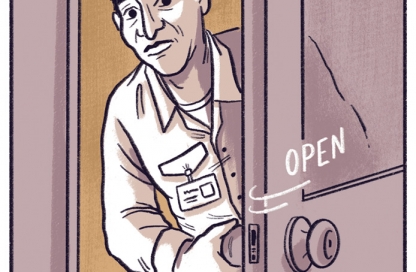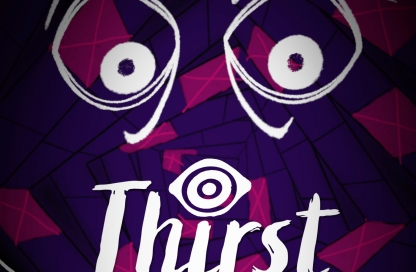5 steps to crafting a basic marketing plan for writers and artists
We may be storytellers but we’re also… how do I say this… billboards. Yeah, not a very delicate way to put it, but here’s where I’m coming from.
Who we are online and off has a big impact on whether our stories sell.
While we believe (and know!) that great work can lead to an audience, we also believe that showing your creation to the right people can make storytelling even more rewarding.
But how do you get the word out?
The good news and the bad news is that there are a million ways.
And that’s why a well-crafted marketing plan for your latest film/book/show/project can help you focus!
A marketing plan for writers and artists should be simple. Not because we’re dumb, but because we have stories to tell!
We have some advice on how to make your own. This marketing plan will be simple. It will include a single goal, your intended audience and a list of tasks to get to your goal.
Here are five simple steps to craft your own lean and mean marketing plan for writers and artists.
But first…step zero…
Be nice to yourself!
If this is new to you, then go slow.
Don’t feed that side of our brain that believes we should be our own harsh boss just because we’re going solo.
You will learn a lot if you give yourself a break. I promise!
Step 1) What do you want to achieve?
Do you want to sell 500 copies of your comic book? Do you want to grow your blog following by 2000 unique visitors per month? Drill down to a simple (one-sentence) goal.
Examples:
“I want to sell 1000 copies of my book on Amazon by January 31.”
“I want 400 new people on my newsletter list by January 31.”
These are stong because they state solid, ambitious (but likely doable) numbers and solid end dates.
Examples of weak goals:
“I want to reach as many people on Goodreads as I can so I can sell more copies of my book in 2014.”
“I want to sell 750,000 downloads of my storybook app by the end of next month.”
Where’s the solid end date?
Where are the specific book sales goals?
And 750,000 downloads? Sure, it’s possible to have a breakout hit. But when you’re designing a basic marketing plan for your latest project it’s best not to use it as a dream-come-true document, and more like a single battle in a large campaign.
And, hey, if you get those 750,000 downloads you can adjust your plan acordingly!
Think in small steps and then, when your efforts start paying off, or not, you’ll be able to spot where the plan is rocking and where it’s crumbling.
Step 2) Define your audience.
You could dive into deep research on this point, but don’t. Not yet. You can crunch data during your next campaign. You want to start with small steps, learn something, then use that knowledge to adjust your plans on the next project.
So for this step just write down, in plain terms, who you crafted your story for. If your answer is “everyone” then your answer is incomplete. Yes, all different types of people enjoy all kinds of stories, but who exactly is your audience?
- Who’s your competition?
- Your inspiration? Think of other stories in your genre that people have responded well to.
- Which of your friends on Facebook would love your story?
- What characteristics do all of these folks share?
Don’t make the mistake of thinking that your audience is like you. Some are. Most aren’t.
Here’s a good sample of an audience breakdown:
My animated short about cats was made for people who love quick and funny cartoons that they can share with their friends. They spend most of their time on their mobile phone. They love anime, cats and being the first person to find something cool.
What do you do with this insight? It’s actually pretty cool…
Step 3) Decide where to promote.
This is the toughest step. The choices are endless. It’s up to you to focus on the methods that will give you the best return on your efforts.
We’ll break the step down into social, free and paid promotional opportunities.
- You described your target audience in the previous step. Guess what? That short paragraph revealed a bunch of words and phrases that you can plug into Google for some ideas on where to promote.
“animated short” yielded http://www.shortoftheweek.com/category/style/animation/
“cats and anime” gave you http://www.anime-planet.com/
“funny cat cartoons” revealed http://www.pinterest.com/brpetsitter/funny-pet-related-cartoons/
When you task out what to do (in the next step) you should make a point of spending time commenting and sharing on the sites you uncover.
- Make a list of the social networks and communities that you’re already plugged into.
Here’s an example of what your list could include:
-
Facebook
-
Twitter
-
Pinterest
-
Newsletter (friends and family if you haven’t built a list of fans yet)
Choose one, maybe two of the above. Don’t overdo it. Stay focused. That way you can learn from your mistakes. When we choose too many weapons in our arsenal, it often becomes impossible to identify what worked and what didn’t!
- From the list of sites, where would you like to advertise your work? Where do fans of your kind of work hang out?
Where you can’t advertise, you should post comments or pitch a guest post.
Consider these ideas for your plan, too:
- Contests
- Convention appearances
- Retail store appearances
- Local, seasonal fairs
In the end you should have a list of 1-2 social networks to spread the word, several sites to advertise on and several sites to contribute guest blog posts and/or comments.
Don’t forget the real world events. Reaching out to your local community is consistently a surprising and rewarding experience.
4) Make a task list
Now that you’ve determined what your goal is, who your audience is and where you want to reach them, it’s time to task it out.
With the list you made in the previous step, think about what you need to get done.
Example:
Let’s say you decide to use Facebook as the primary social outreach tool. Here’s what the beginnings of a task list would include:
- Set up Facebook Page
- Use Facebook Event invite to invite all friends to join my new Page
- Put link to Page in email sig, bio on Amazon/Goodreads
- Post once per day with excerpts, links to images that inspired my project or thoughts on subject matter that’s related to my story.
5) Make a schedule
Now that you have a task list, write down which tasks you’ll do on which days.
There are a ton of online calendars to choose from, but paper and pencil can be an effective way to craft and update a schedule.
That’s it! You’ve defined your goal, found your audience and scheduled your first marketing campaign. Now you can compile it, print it out and stare at your first marketing plan!
Then dive in, nose-first…
Does the idea of writing up this doc sound like a nightmare? Maybe you should use your storytelling chops to write a marketing plan. In a future Marketing 101 installment we’ll get into how you can tell the story of your successful marketing campaign by writing it out as a short story!
We’ll also cover some solid ways to track your goals and pivot when things aren’t going as planned.
Ben Zackheim (Contributor)



